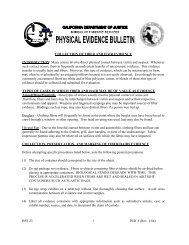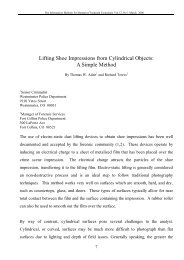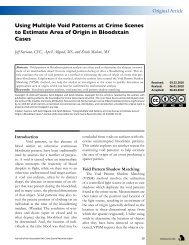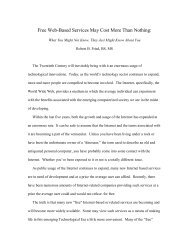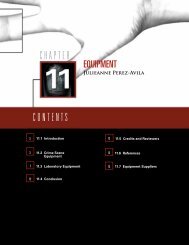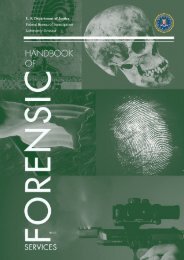PHYSICAL EVIDENCE MANUAL - Crime Scene Investigator Network
PHYSICAL EVIDENCE MANUAL - Crime Scene Investigator Network
PHYSICAL EVIDENCE MANUAL - Crime Scene Investigator Network
Create successful ePaper yourself
Turn your PDF publications into a flip-book with our unique Google optimized e-Paper software.
Physical Evidence Manual<br />
14.0 GUNPOWDER AND SHOT/PELLET PATTERNS<br />
When fired, a mixture of burned and unburned gunpowder, vaporized primer, and<br />
bullet or shot material is blown out the firearm’s muzzle along with the bullet or<br />
shot pellets and wad(s).<br />
Examination of the evidence may reveal the following:<br />
• Proximity, which is the distance from muzzle to target determined by<br />
powder or shot patterns<br />
• Ammunition type<br />
• Ammunition manufacturer<br />
• Firearm condition<br />
• Bullet or pellet entry angle<br />
• Stipling or sooting around the entrance<br />
Collection of Gunpowder Evidence<br />
Submit the clothing or other object(s) that may have gunshot residue or<br />
bullet/pellet holes. Carefully handle and package the evidence to avoid losing<br />
deposited gunpowder and/or other residue(s).<br />
If possible, collect and submit ammunition of the same type used in the crime<br />
(e.g. ammunition from the firearm’s magazine, unused ammunition from a box at<br />
the scene, etc.)<br />
Adopted: May 2002<br />
Revisions: 6<br />
Last Revision: January 31, 2008<br />
14-1



